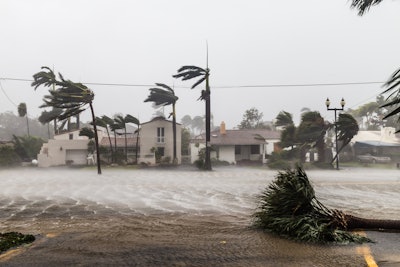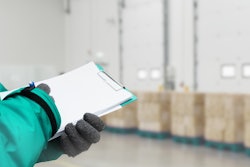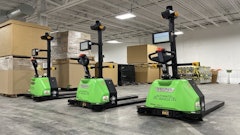
Summer 2024 was the Northern Hemisphere’s hottest on record with parts of the United States under a heat advisory almost every day. As extreme heat plagued both coasts and the southwest, the record-breaking heat also led to several tornado outbreaks this year, causing damage and creating danger in their wake. For transportation and food logistics operations, the effects of heat waves and tornadoes extend beyond drivers, vehicles and operational processes. Extreme weather also affects safety, the food supply chain and everyday consumers.
Severe and extreme weather can cause a wide variety of disruptions to the food supply chain and poses safety risks for professional truck drivers on the road. As truck operators face various–and often hazardous–weather conditions, they need to consider the impact that extreme weather has on vehicles and the higher degree of maintenance preparedness required to overcome severe weather.
Thanks in large part to advances in technology, the transportation industry is much better at predicting, tracking, avoiding and addressing weather-related disruptions than ever before.
Extreme weather challenges
The key impacts we see during extreme weather are centered around disrupted supply chain and logistics operations, damage to critical infrastructure and drastic swings in supply and demand.
Severe weather can lead to significant delays in transportation due to road closures, port shutdowns, and disruptions to air and rail services. This can delay the delivery of goods, affect inventory and lead to stockouts or overstock situations. Truck operators may need to reroute shipments to avoid affected areas, which often leads to increased fuel costs and longer delivery times. This can result in higher operational costs and impact the efficiency of logistics operations.
Facility damage, power outages and communications disruptions can also interrupt the supply chain, exacerbating delays and inefficiencies. Truck operators must also be prepared to work through the changing shifts in consumer behavior before, during and after extreme weather events.
Mitigation through technology
Through advances in technology, fleet managers can access weather insights and data directly from route optimization and navigation solutions to help mitigate challenging weather events.
The combination of transportation management systems with advanced weather data tools provides food logistics professionals critical predictive information about when and where a driver’s route is expected to be impacted. This information ensures that operations keep moving amid challenges and everyone stays safe on the road.
Commercial navigation applications now are equipped with real-time weather data and predictive updates displayed along a weather overlay on the navigation map, giving drivers full visibility of weather conditions along their routes to plan accordingly and minimize risk. Alerts are route-based instead of strictly location-based, which means they are more precise than geofenced alert services from the National Oceanic and Atmospheric Administration (NOAA).
In addition, real-time insights into weather provide fleet managers with critical data so they can modify trip plans, communicate clear directions to drivers and rethink strategies as severe weather approaches. Now both drivers and fleet managers can receive live email updates about the impact of severe weather events in specified areas, get weather risk warning icons along routes and access detailed geographic data about weather events.
Enhanced safety
The integration of weather modeling systems with navigation applications helps fleets adapt to harsh weather in real time, allowing drivers and fleet managers to plan ahead to reduce the risk of an accident and avoid potential delays in the event of hazardous conditions along their routes.
It is critical that drivers are equipped with purpose-built technology tools so they can safely overcome the unique weather challenges they face on the road every day. The combination of a fleet-wide navigation application with a weather modeling system can guide commercial drivers to their destinations as safely and efficiently as possible.
Some of the more advanced safety systems can even include tools like a pre-trip view of the overall risk index for a trip and in-trip active alerting when approaching a local weather event with instructions on the actions to take for safe driving.
What’s next
Safety is paramount for all commercial vehicles on the road. Transportation technology experts are working closely with weather data providers to identify ways to improve weather predictions and monitor additional weather parameters such as hyper-local wind events, hydroplaning risks, understanding the impact of snow events and subsequent changing temperature conditions, black ice driving conditions and more.
It is also extremely important for technology innovators to collaborate with fleet operators and food logistics professionals to deliver purpose-built technology to solve their unique challenges around weather issues.
Taking the time to fully understand how weather events affect operations helps the industry develop solutions that set the standard for managing weather-related disruptions safely and efficiently. Getting feedback from drivers and fleet owners on user experience and the impacts of new capabilities are key to developing innovative technologies.
The impact of climate change means the industry must stay on top of new weather parameters that can provide more safety insights. Drivers and dispatchers will need to quickly adapt to extreme weather conditions to safely reroute drivers and loads in an effort to avoid delays or increase the potential for accidents. While the immediate impacts of severe weather continue to increase around the globe, technology exists to help generate advance warnings so fleets and drivers can take action and stay safe.




















